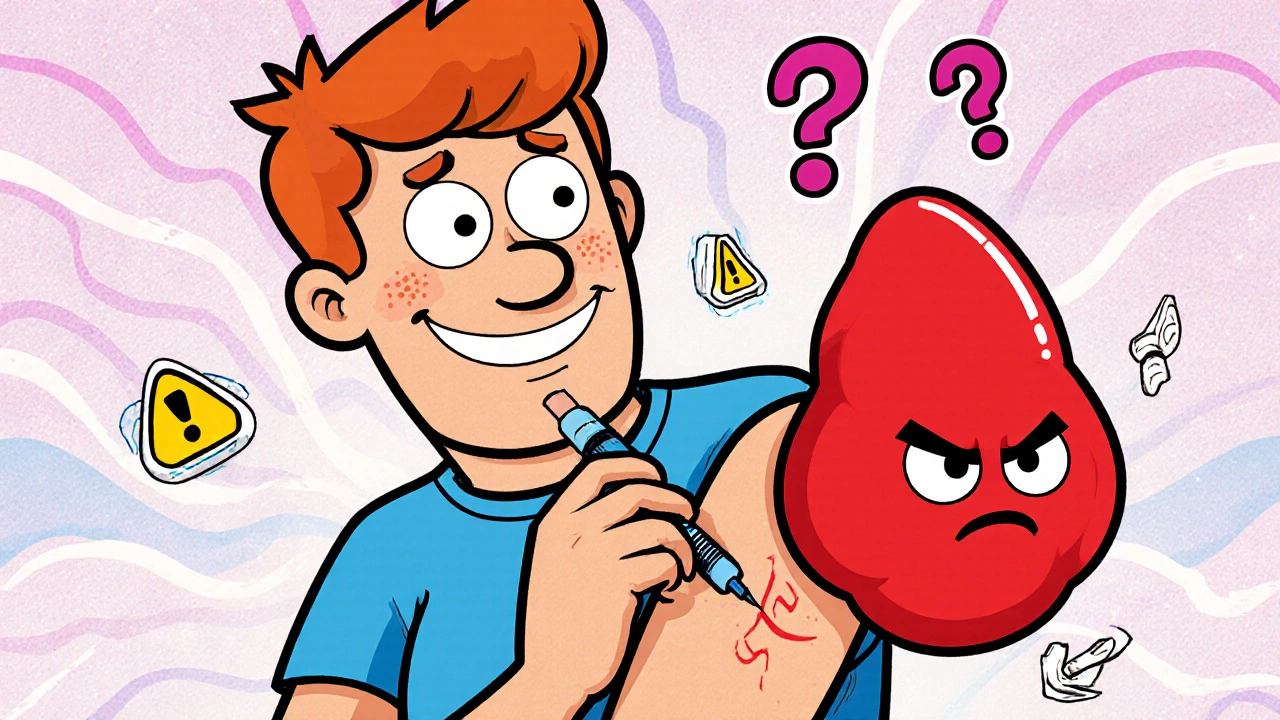Insulin allergies are rare but serious. Learn how to recognize injection reactions - from itchy bumps to life-threatening anaphylaxis - and what steps to take to stay safe while continuing insulin therapy.
Insulin Side Effects: What You Need to Know Before Starting Treatment
When you start using insulin, a hormone therapy used to control blood sugar in people with diabetes. Also known as injectable glucose regulator, it’s one of the most effective tools for managing type 1 and advanced type 2 diabetes—but it’s not without risks. Many people assume insulin is safe because it’s a natural body chemical, but when dosed wrong or used without proper monitoring, it can trigger serious reactions. The biggest concern? hypoglycemia. That’s when your blood sugar drops too low, and it can happen fast—sometimes before you even feel symptoms like shakiness, sweating, or confusion.
Insulin side effects aren’t just about low blood sugar. Weight gain is common, especially in the first few months, because insulin helps your body store energy instead of burning it off. Some people notice swelling in their arms or legs, especially when starting a new dose. Others get redness or lumps at the injection site—this isn’t always an allergy, but it can be a sign you’re rotating sites too slowly. And while rare, some experience allergic reactions: itching, hives, or even trouble breathing. If you’ve ever felt dizzy after an insulin shot, you’re not imagining it. That’s your body reacting to a sudden drop in glucose. It’s not weakness—it’s biology.
What most people don’t realize is that insulin side effects often depend on insulin dosage, the amount prescribed based on body weight, diet, activity level, and other medications. Also known as insulin regimen, it’s not one-size-fits-all. A dose that works perfectly for one person might cause lows in another. Timing matters too. Taking insulin too early before a meal? You risk a crash. Skipping a meal after injecting? That’s how emergencies happen. And if you’re on multiple types—like long-acting and rapid-acting—the interaction between them adds another layer of complexity. You need to track not just your sugar numbers, but your meals, your stress, your sleep, and even the weather. Cold temperatures can make insulin absorb slower. Heat can make it work too fast.
It’s not just about avoiding side effects—it’s about learning to predict them. Most people who manage insulin well learn their patterns: when they’re most likely to crash, what foods help them recover, how exercise changes their needs. That’s why tracking isn’t optional—it’s survival. The good news? Many side effects fade as your body adjusts. Weight gain slows. Injection site irritation improves. But hypoglycemia never goes away on its own. You have to stay alert.
Below, you’ll find real-world insights from people who’ve lived with insulin for years. Some share how they stopped nighttime lows. Others explain why switching insulin types changed everything. There are stories about missed doses, near-misses, and what to do when you’re alone and your sugar drops. You’ll see what works, what doesn’t, and how to talk to your doctor without sounding paranoid. This isn’t theory. It’s what happens when insulin meets real life.

